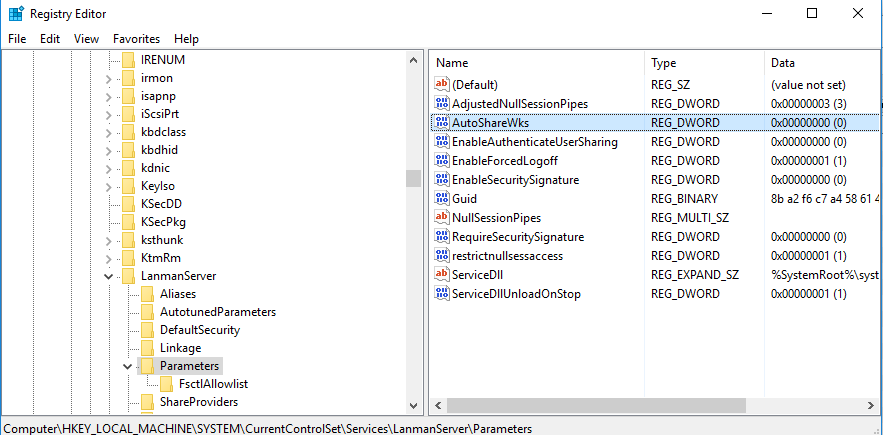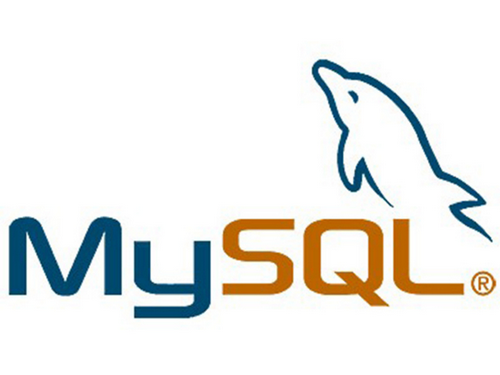 By default, Windows creates some hidden shared folders – administrative shares. These folders are identified by a dollar sign ($) at the end of the share name and so they are hidden. Hidden shares are those that not listed when you look at the network shares on a computer in File Explorer’s Network node, or using the net view command. Windows 10, Windows 8, Windows 7 and even Vista and XP create hidden administrative shares that administrators, programs, and services can use to manage the computer environment on the network. Continue reading
By default, Windows creates some hidden shared folders – administrative shares. These folders are identified by a dollar sign ($) at the end of the share name and so they are hidden. Hidden shares are those that not listed when you look at the network shares on a computer in File Explorer’s Network node, or using the net view command. Windows 10, Windows 8, Windows 7 and even Vista and XP create hidden administrative shares that administrators, programs, and services can use to manage the computer environment on the network. Continue reading
Jan 25 2017
How to Disable Administrative Shares in Windows
Jan 20 2017
Cannot publish topology changes. Conference directories still exist on a pool that would be deleted. Remove the conference directories before continuing.
 During migration to a new pool there was a need to remove old Front End servers from topology. After removing them from topology builder I received this error: “Cannot publish topology changes. Conference directories still exist on a pool that would be deleted. Remove the conference directories before continuing”. Quick look into the error showed that topology builder had a dependency on a conference service installed on one of the servers that wasn’t cleaned up properly. Continue reading
During migration to a new pool there was a need to remove old Front End servers from topology. After removing them from topology builder I received this error: “Cannot publish topology changes. Conference directories still exist on a pool that would be deleted. Remove the conference directories before continuing”. Quick look into the error showed that topology builder had a dependency on a conference service installed on one of the servers that wasn’t cleaned up properly. Continue reading
Jan 14 2017
Upgrading MySQL 5.1 to 5.7 service failed to start
 After MySQL upgrade from 5.1 to 5.7 on Centos 6.8 the mysqld service failed to start. In /var/log/mysqld.log I got the following:
After MySQL upgrade from 5.1 to 5.7 on Centos 6.8 the mysqld service failed to start. In /var/log/mysqld.log I got the following:
2017-01-14 17:19:33 2175 [ERROR] InnoDB: auto-extending data file ./ibdata1 is of a different size 640 pages (rounded down to MB) than specified in the .cnf file: initial 768 pages, max 0 (relevant if non-zero) pages!
2017-01-14 17:19:33 2175 [ERROR] InnoDB: Could not open or create the system tablespace. If you tried to add new data files to the system tablespace, and it failed here, you should now edit innodb_data_file_path in my.cnf back to what it was, and remove the new ibdata files InnoDB created in this failed attempt. InnoDB only wrote those files full of zeros, but did not yet use them in any way. But be careful: do not remove old data files which contain your precious data!
2017-01-14 17:19:33 2175 [ERROR] Plugin ‘InnoDB’ init function returned error.
2017-01-14 17:19:33 2175 [ERROR] Plugin ‘InnoDB’ registration as a STORAGE ENGINE failed.
2017-01-14 17:19:33 2175 [ERROR] Unknown/unsupported storage engine: InnoDB
2017-01-14 17:19:33 2175 [ERROR] Aborting
Jan 10 2017
Skype for Business. Move Central Management Store
 There is a need to move Central Management Server to a new pool as the existing one is going to be decommissioned. SQL Backend consists of two MSSQL 2014 Servers running in AlwaysOn Cluster. While running Move-CsManagementServer commandlet with –WhatIf key I got an error:
There is a need to move Central Management Server to a new pool as the existing one is going to be decommissioned. SQL Backend consists of two MSSQL 2014 Servers running in AlwaysOn Cluster. While running Move-CsManagementServer commandlet with –WhatIf key I got an error:
Cannot move Central Management Server. The new Central Management Store located at “AlwaysOnListener.domain.com” is not accessible.
Needless to say that listener’s FQDN is available as well as both SQL servers. Permissions is not the case as well as I run that command under user with RTCUniversalServerAdmins group membership. Continue reading
Jan 05 2017
Install Skype for Business Prerequisites
Skype for Business Server 2015 is available now, along with a new set of demands to install it right on your Windows Server.
Here are the recommendations for each Windows version:
Windows Server 2008R2: Microsoft recommends that you only install Skype for Business Server 2015 on Windows Server 2012 or 2012R2. However, if you’re in-place upgrading from an existing installation of Lync 2013, you might like to use your existing Windows 2008R2 server. The following procedure assumes you already have Lync 2013 installed on your system, so all prerequisites should already be installed. Continue reading
Jan 04 2017
Understanding Skype for Business DNS Records and Autoconfiguration
 Skype for Business DNS Records are one of critical components of the whole infrastructure. Skype for Business uses two types of DNS records: A record and SRV record.
Skype for Business DNS Records are one of critical components of the whole infrastructure. Skype for Business uses two types of DNS records: A record and SRV record.
The DNS is often deployed as “split-brain” DNS deployment: the same zone name is deployed internally and externally but with different (internal or external) IP-addresses for the same entries.
Thus Skype for Business clients will get information only from their zone, so if external client is trying to connect to Skype for Business server, it will resolve the entries to the external IP-addresses, if it’s from internal network then it will resolve the DNS entries to internal IP-addresses using the internal DNS server.
If you are not using “split-brain” DNS you can create a zone for each required DNS records pointing it to the internal IP-address. Continue reading
Dec 19 2016
Configuring Gmail as a Sendmail email relay
In this article I will show how to configure gmail to be an email relay for your linux server with sendmail MTA. This allow you to send letters from your bash scripts, hosted website or from command line using mail command. Other examples where you can utilize this setting is for a notification purposes such or failed backups etc. Sendmail is not the only Mail Transport Agent that can be configured to use gmail account Postfix, exim , ssmpt etc. can be configured as well. The guide below was created on Debian. Continue reading
Dec 14 2016
Configure Postfix to use Gmail as a Mail Relay
Postfix is a free, open-source, actively maintained, and highly secure mail transfer agent. You can configure your system with Postfix to use Gmail as a mail relay.
In order to do this follow the instruction below. Use sudo when needed or execute the commands below under “root” account.
Dec 13 2016
File Transfer Agent cannot send/get replication data to Replica Replicator on Edge
 The sympthom is that on Skype for Business Front End Server you see Event ID 1046 LS File Transfer Agent Service in the Event Log:
The sympthom is that on Skype for Business Front End Server you see Event ID 1046 LS File Transfer Agent Service in the Event Log:
Skype for Business Server 2015, File Transfer Agent cannot send replication data to Replica Replicator on Edge
Skype for Business Server 2015, File Transfer Agent cannot get replication status from Replica Replicator Agent on Edge
Edge machine: EDGENAME
Exception: System.ServiceModel.Security.MessageSecurityException: The HTTP request was forbidden with client authentication scheme ‘Anonymous’. —> System.Net.WebException: The remote server returned an error: (403) Forbidden.
at System.Net.HttpWebRequest.GetResponse()
at System.ServiceModel.Channels.HttpChannelFactory1.HttpRequestChannel.HttpChannelRequest.WaitForReply(TimeSpan timeout)
— End of inner exception stack trace —
Server stack trace:
at System.ServiceModel.Channels.HttpChannelUtilities.ValidateAuthentication(HttpWebRequest request, HttpWebResponse response, WebException responseException, HttpChannelFactory1 factory)
…
Cause: Service may be unavailable or Network connectivity may have been compromised.
Resolution:
Verify that Replica Replicator Agent service is running on the Edge machine, network connectivity is available and TLS is configured correctly. For details, see http://support.microsoft.com/kb/2464556
Dec 12 2016
Skype for Business Server 2015 Databases Purpose
Skype for Business Server 2015 databases are as same as they were in Lync Server 2013. So this article is appliable for Lync Server 2013 as well. Skype for Business Server 2015 installs SQL Server 2014 Express Edition (64-bit) for local configuration databases while SQL Server 2014/SQL Server 2012 SP2 with CU2/SQL Server 2008 R2 SP2 can be deployed for Back End databases, Archiving, Monitoring, Persistent Chat and Persistent Chat Compliance databases. Below are the graphical representation of databases placement in Standard and Enterprise Edition. Continue reading




